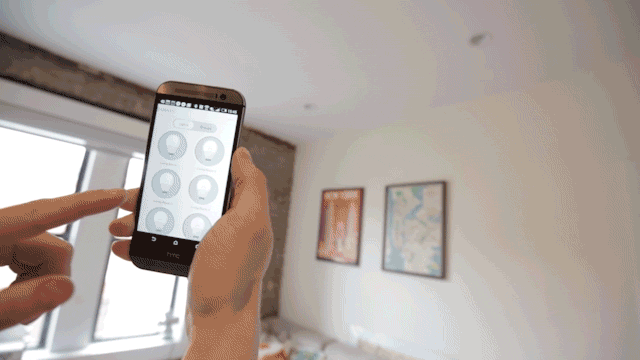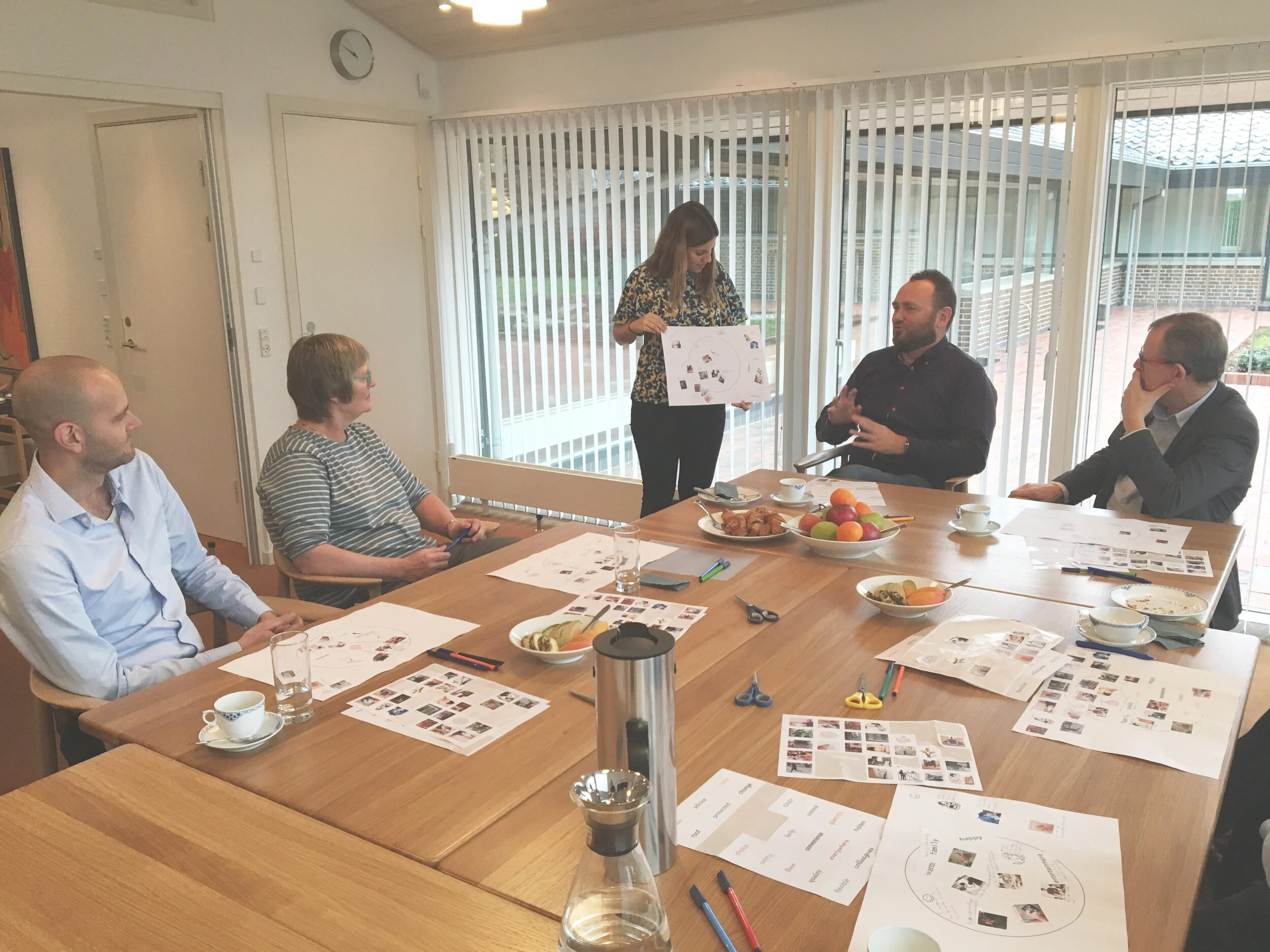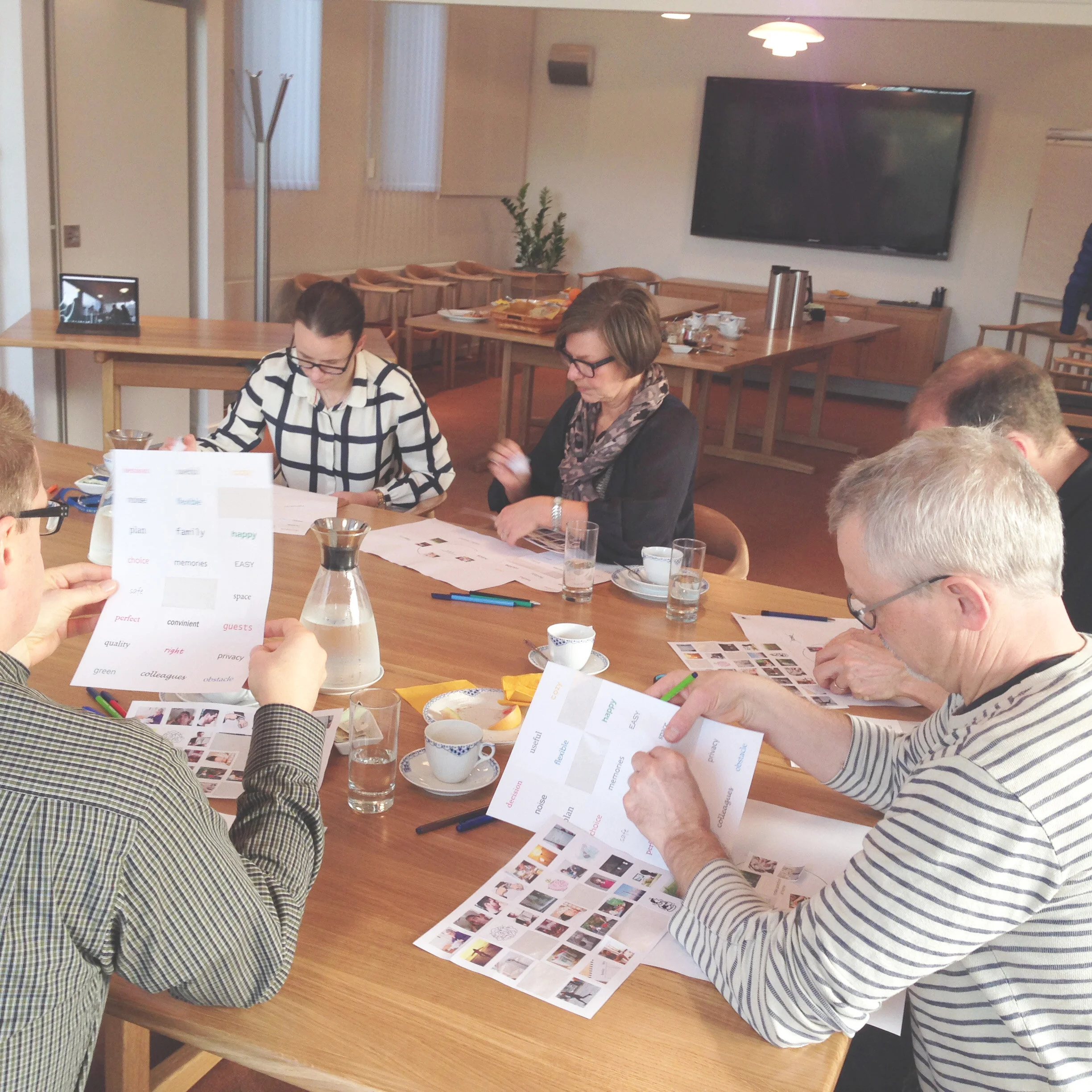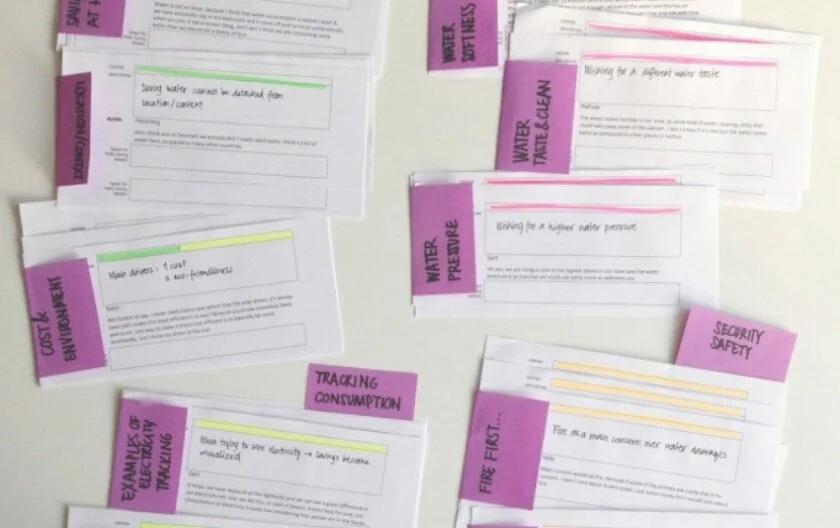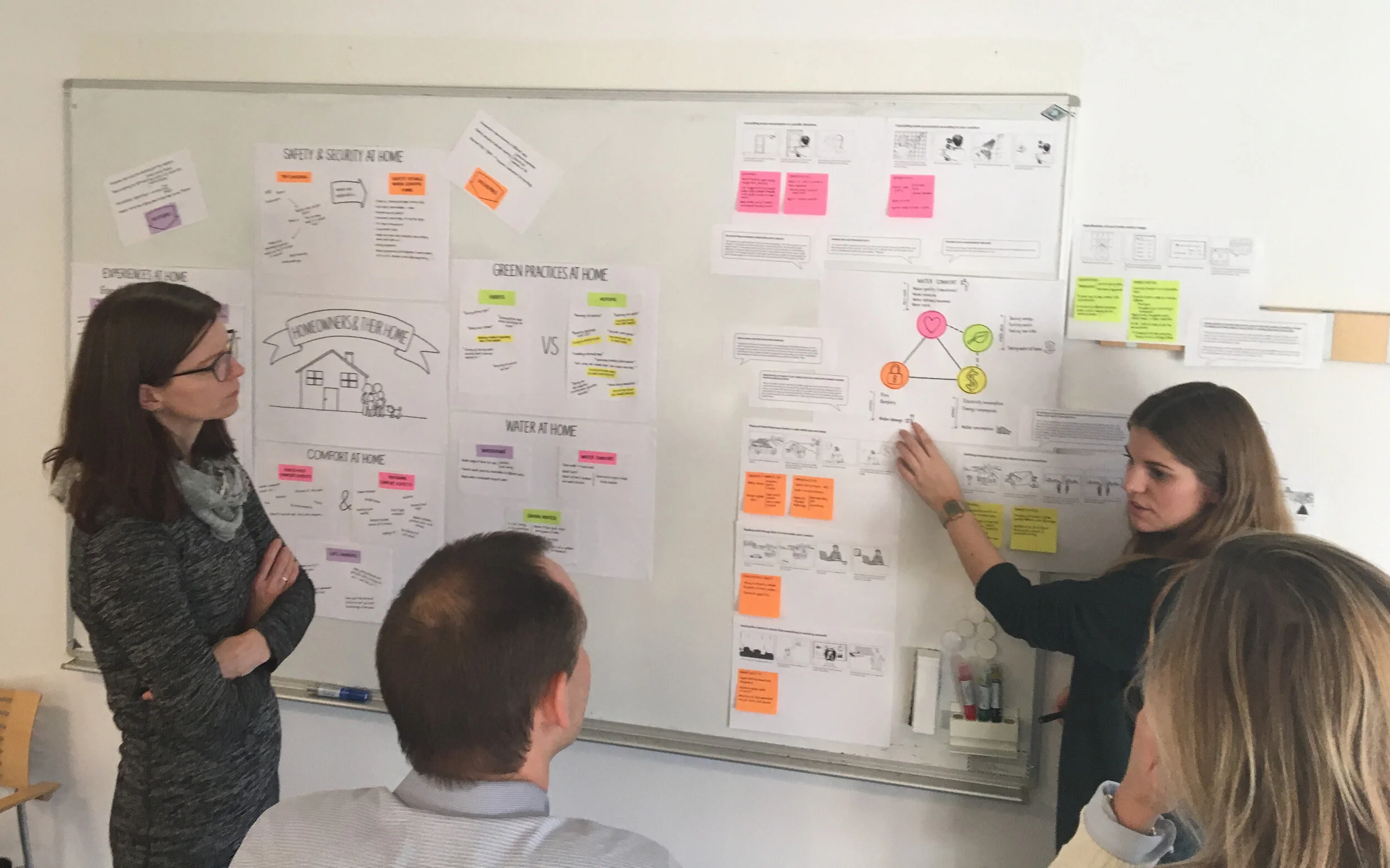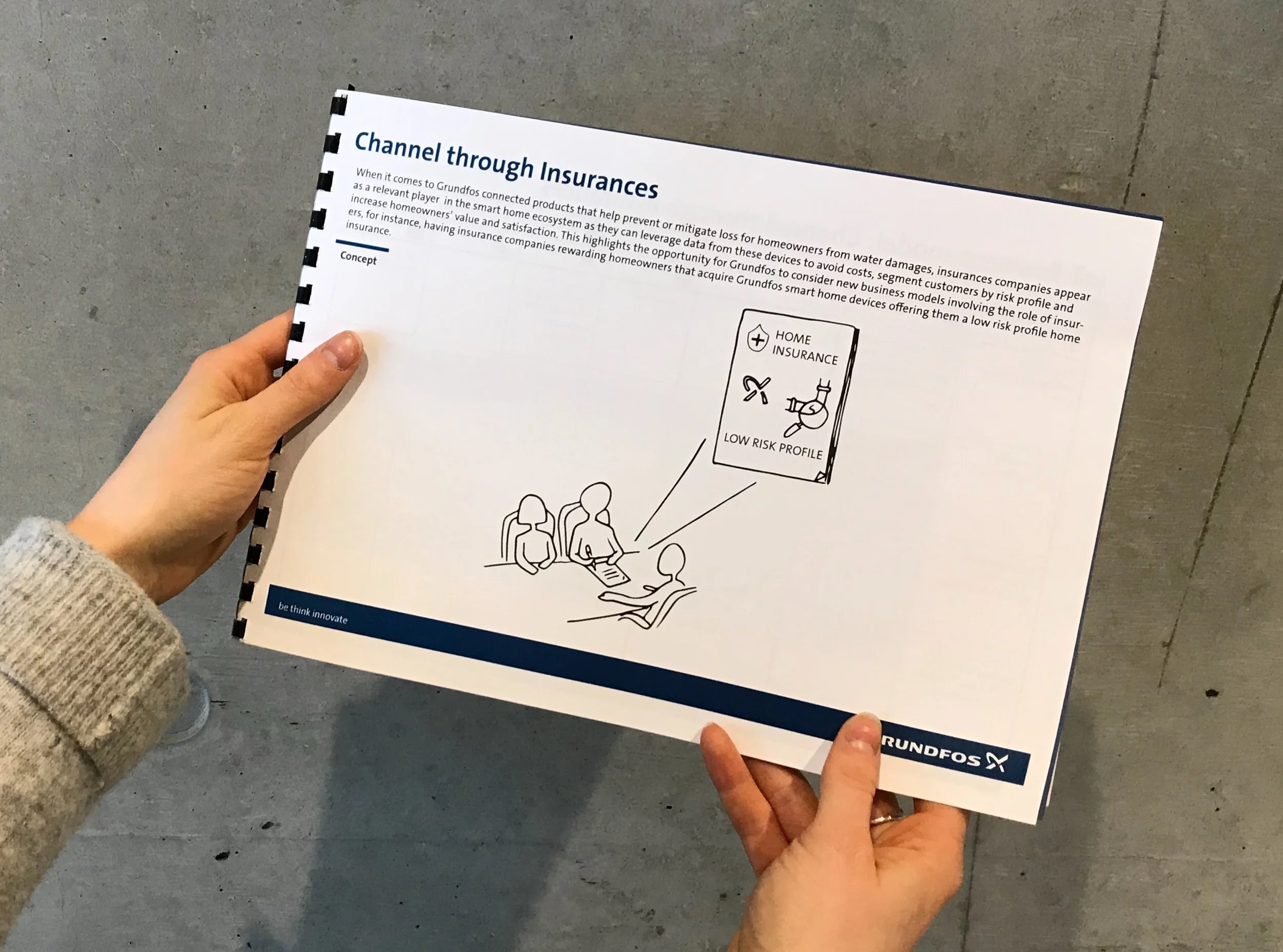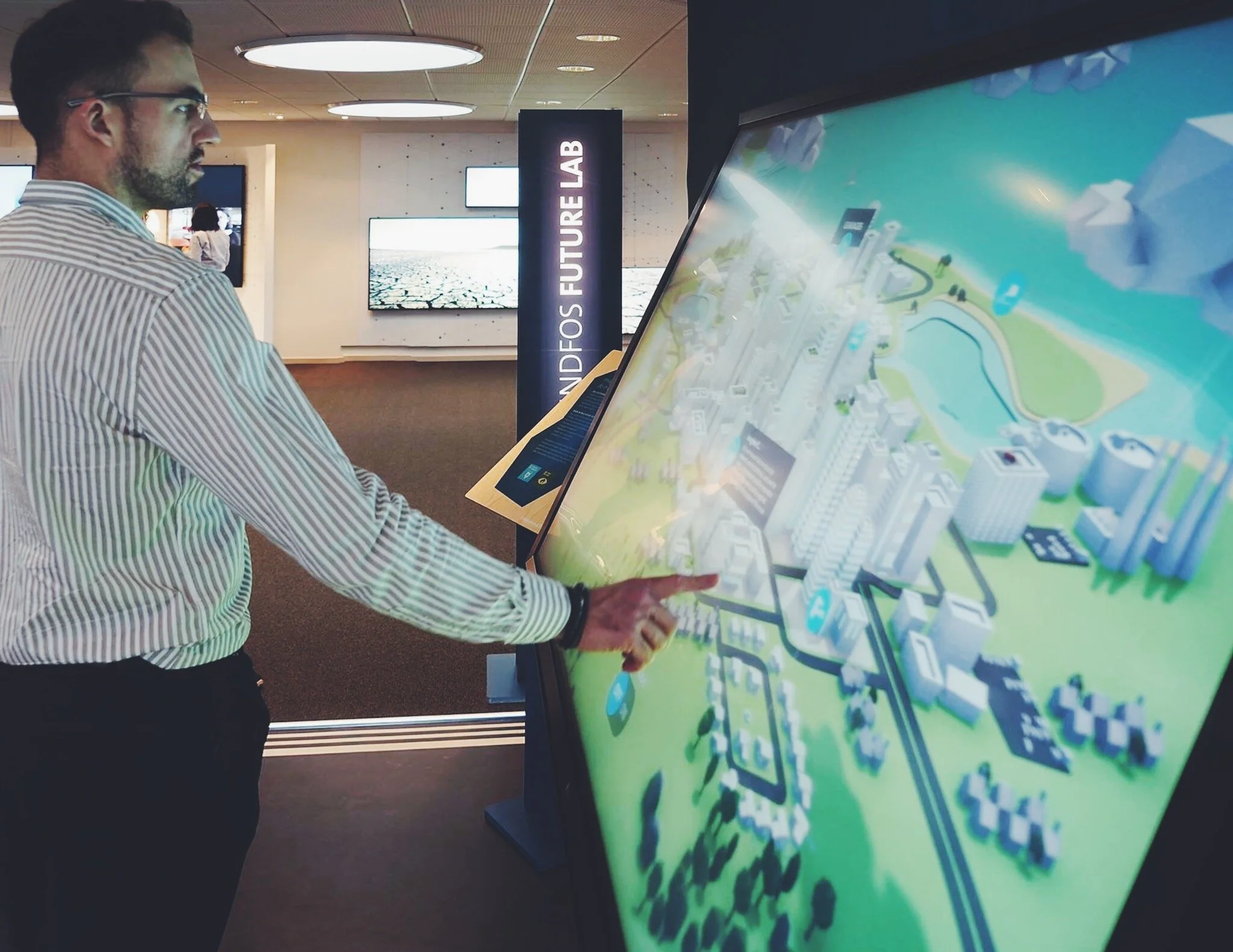
Engaging homeowners in envisioning the future home
My role Service / Business Designer
Activities Desk research, interviews, generative research, cultural probes, context mapping, video storyboarding, ideation workshops, value proposition and business model design
Client Grundfos
Sector Smart home
Duration 6 months
Challenge
The Domestic Building Services segment in Grundfos focuses on private housing and domestic pump applications. Business developers in this area are responsible for evaluating the business opportunities for the company within the scope of the segment and its applications. As a result, they are a very product driven team, being the majority of their customers wholesalers and installers.
Against this backdrop, the company’s digital transformation adds up possibilities for this segment to develop digitally enabled offerings targeted to homeowners. This shift on the target audience, required business developers' research efforts to focus on the new consumer group towards unlocking value in the smart home ecosystem.
Outcome
In close collaboration with a team of business developers, we provided a solid strategic foundation for the segment to venture into the smart home market. By leveraging a design research approach, my role involved planning, designing and guiding research and design activities providing new actionable insights and opportunities to support the segment in their shift to homeowner-centered connected offerings.
Process
Preliminary research
The beginning of the collaboration with the business developers involved reviewing existing research material, attending relevant conventions and webinars about the smart home market and conducting in context interviews with homeowners. This way, we yielded key insights about the smart home market, its players as well as consumers' positions.
These insights were key in building a framework with the homeowner at the centre that enabled identifying the right questions to ask in order to create new starting points for IoT strategies, other than technological possibilities.
Generative research
We decided on running generative sessions with homeowners as the best methodology to address the research goal, as it would allow us learning new ways to approach the understanding of homeowners in order to innovate. The key here was to tailor and customize different design research techniques in order to yield actionable insights.
I facilitated two generative sessions with six homeowners each. The sessions where designed to first immerse participants in the present situation by sharing personal experiences; then in the past by awakening their memories and associations; and finally, building on the awakened sensitivity and awareness, they would explore situations in possible futures.
User diaries
One-week Me and my home diaries aimed at making it fun and easy for homeowners to make observations and reflect upon their safety rituals, green practices or current routines at home. The filled user diaries represent an exceptional testimony of how everyday people can become useful partners to inspire the design process when given the appropriate tools.
Collage tool-kits
We designed collage toolkits aimed at stimulating the expression of memories towards understanding homeowners’ values around comfort and well-being at home. The collages facilitated, for example, the sharing of anecdotes regarding water damages or stuff that had broken down at home, opening the way for discussing topics such as the hidden costs of the house or the relationships with insurances.
Future scenarios
We also assessed the business opportunities various video storyboards presented by getting homeowners’ reactions to them. The videos sparked discussions pointing out to changing situations in the life of homeowners leading to an increase in their interest in tracking their own consumption. This opened up possibilities to support homeowners in their efforts to figure out how the new situation works.
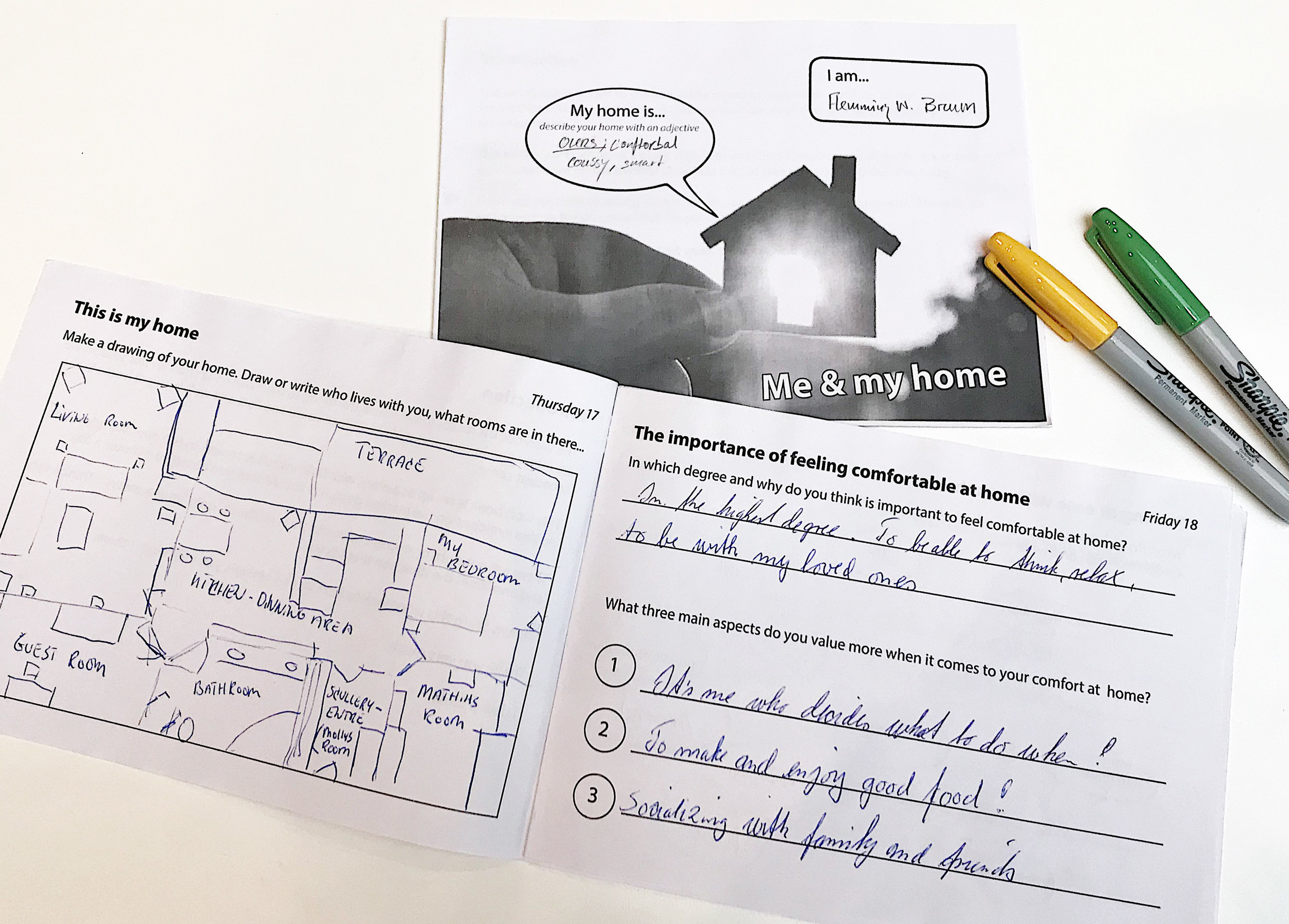
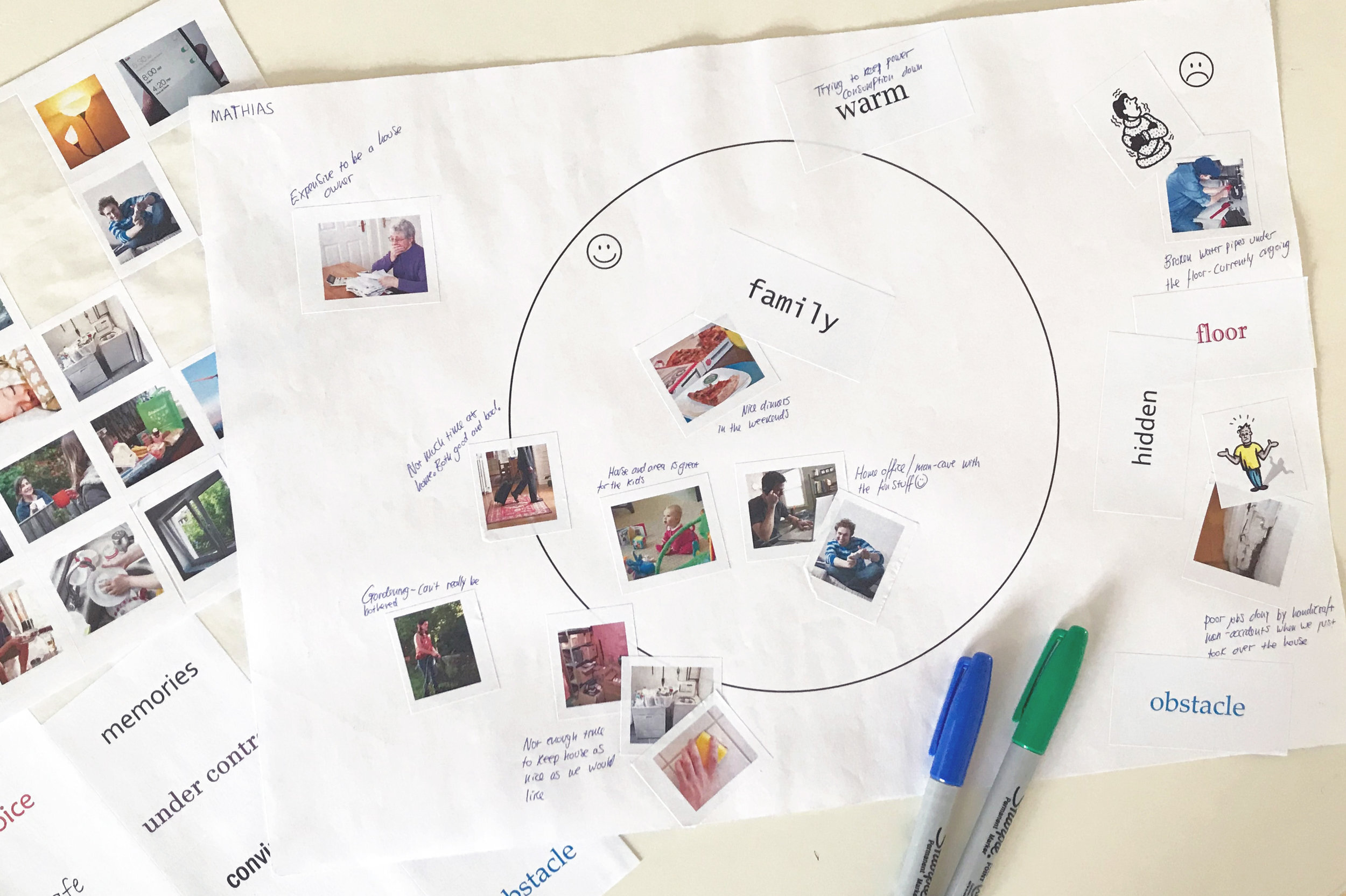

Synthesis
A careful analysis of all the data gathered throughout the generative sessions involved playing with findings throughout the wall to derive meaningful insights, themes and opportunity areas. Using cards containing relevant quotes and written interpretations facilitated the synthesis process by making it easier to draw connections.
Having familiarized with the data and the different clusters, I constructed several models that became key in capturing the research insights, as well as in establishing the guiding principles to drive the portfolio strategy and opportunities.
Ideation
Drawing on the inspiring and engaging insights and stories coming from the generative sessions, I planned and designed a series of brainstorming sessions to facilitate the generation and sharing of ideas from multidisciplinary stakeholders.
I designed a model for playing in the design opportunity space in order to help stakeholders with different backgrounds generate, share and communicate ideas about the future.
Concept development
Through the compilation and combination of ideas, we identified a number of potential digitally enabled value propositions for which I sketched different end-user scenarios and concepts. On a shorter-term perspective, we targeted the value propositions at the homeowner segments currently retained by the company with its cold water applications.
On a longer-term perspective, I sketched scenarios truly embedded in the smart home ecosystem by having Grundfos as one more player contributing to value creation. These scenarios enabled us to show the inherent value delivered to homeowners by having a more connected lifestyle.
Business model ideation
In thinking through reinvented business models and strategies considering different smart home players, I developed a tool to depict, envision and analyze business models in IoT driven ecosystems. Using this tool facilitated discussions around the segment’s ambition on finding new ways to make their residential products generate unique and distinct value to homeowners and other players in the smart home ecosystem.
Impact
The high-impact insights delivered allowed business developers for their easy incorporation and adoption as the foundation for the connected portfolio strategy. At the same time, the insights also boosted innovative ideas on future opportunities within the smart home market that were incorporated as part of Grundfos Future Lab initiative.
Furthermore, the developed IoT business model tool is currently being used by strategic consultants in Grundfos to facilitate discussions with possible partnerships within the smart home ecosystem towards defining concrete digital offerings and exploring new business models.
Reflections and takeaways
Having artifacts at hand such as sensitizing diaries, collages and videos, is key to facilitate design dialogues into the underlying layers of knowledge of participants
The artifacts have to invite to co-discovery, so their open-endedness is crucial in letting participants’ own matters of interest and interpretations become subject of exploration
In applying an outside-in research approach there is a need for providing space, resources and time for explorative research that allows developing a unique understanding of the customers, their needs and aspirations in relation to the fast-paced environment
Internal knowledge sharing and participatory communication sessions become crucial in translating and carrying research insights and findings to design and development teams, and other areas of an organization
MORE CASE STUDIES
Service design │ UX research & design
Co-creating digitally enabled services with wastewater operators
UX research & design




